Taiyo A60827 27MHz REMOTE CONTROL TRANSMITTER User Manual
Taiyo Co., Ltd. 27MHz REMOTE CONTROL TRANSMITTER
Taiyo >
USERS MANUAL

Sparc! is distributed exclusively
by Horizon Hobby Inc.
4105 Fieldstone Road
Champaign, IL 61822
©2006
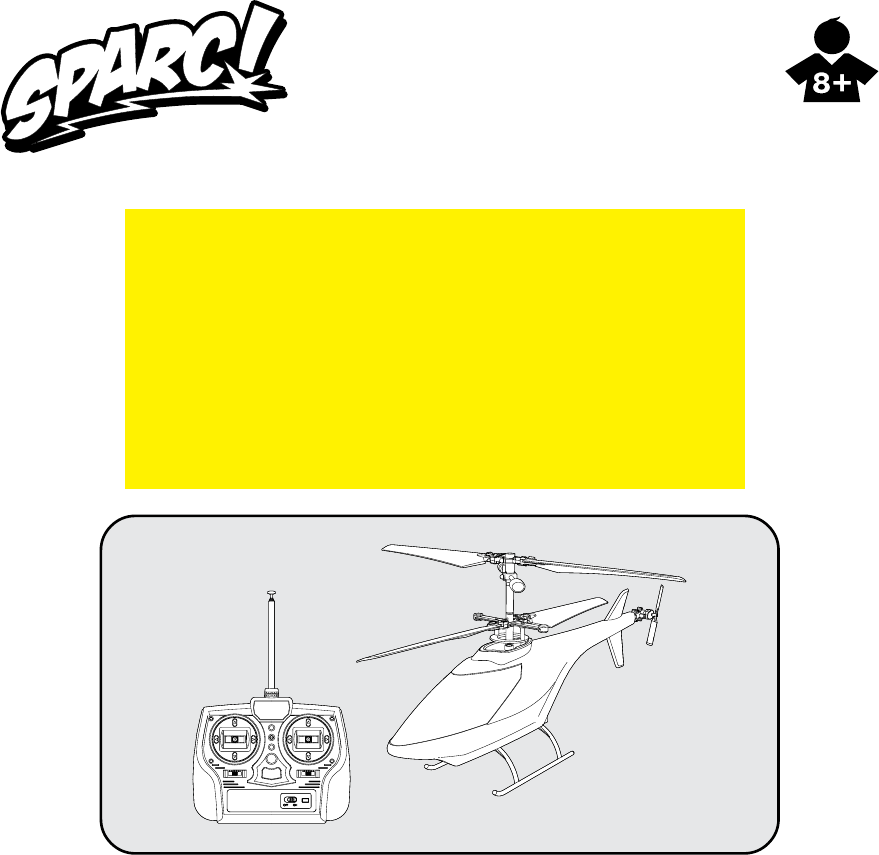
OWNER’S MANUAL
Keep these instructions for future reference as they
contain important information.
9469
Hoverflash logo to
go here. FPO

2
A
B D
C
12
3
5
6
7
8
9
4
1
21
1
212
3
5
6
4
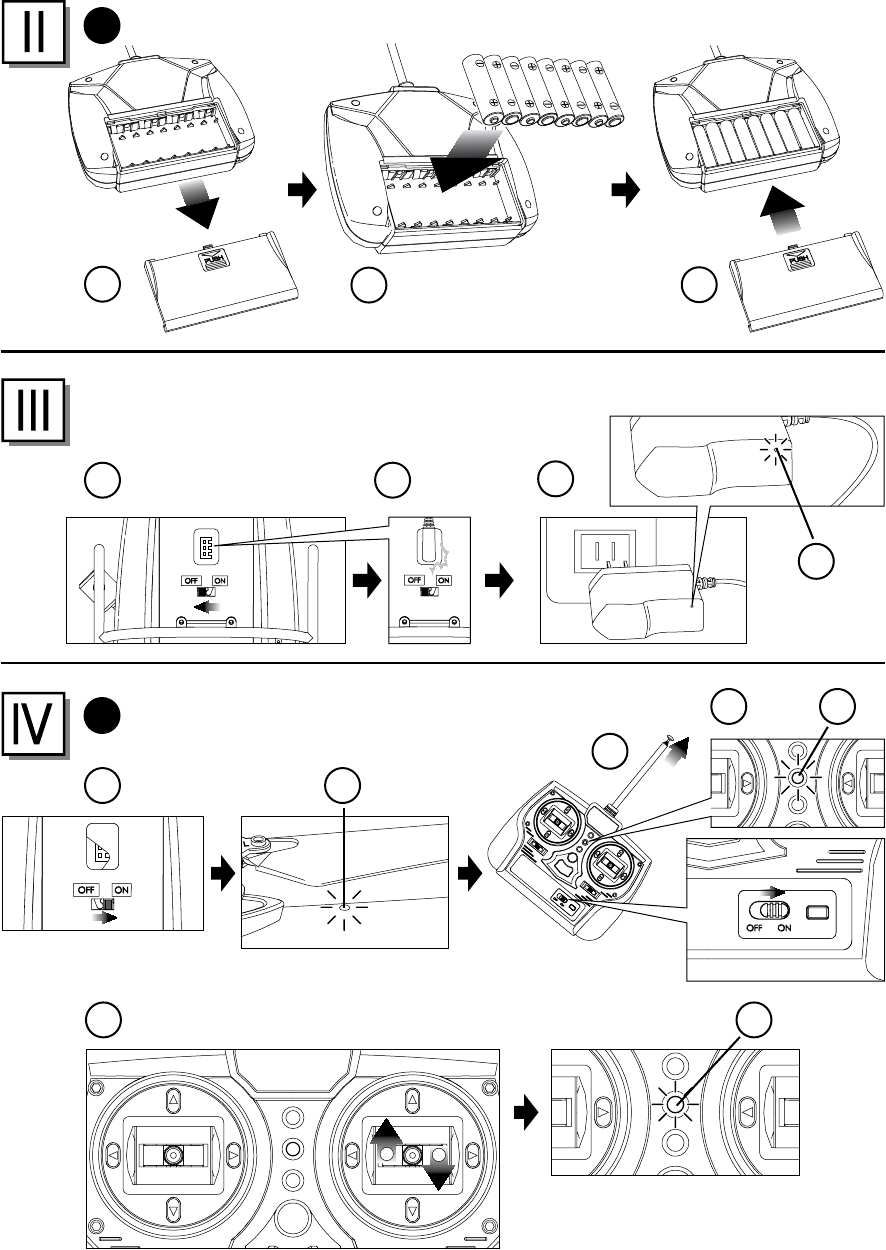
3
12
-1
-1
-1
-1
-1
1
1 1
1 1
2
2
23
33
4 4
1
2
2
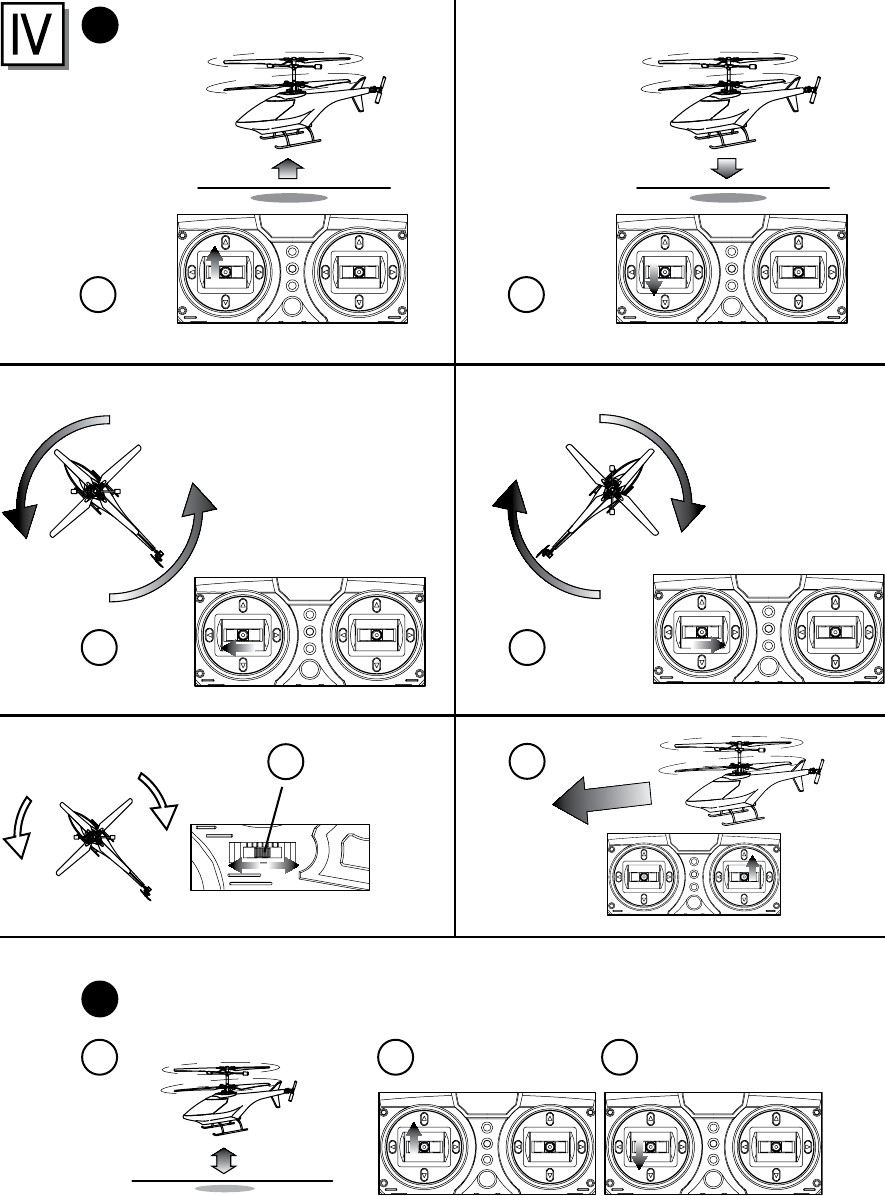
4
-1 -2
-1 -2
-1 -2
-3
111
23
3
2
1 1
22

5
-1 -2
-3
2 2
3
1
2
2
6
Safety first
CAUTION: TO AVOID BATTERY
LEAKAGE. (OF AA BATTERIES FOR
TRANSMITTER)
• Use AA batteries for transmitter.
• Make sure the batteries are inserted
with correct polarity and follow the
toy and battery manufacturer’s
instructions.
• After use, remove the batteries from
the transmitter to store.
• Do not attempt to short-circuit,
charge, disassemble or heat batteries.
Do not dispose of batteries in re or
get them wet.
• If battery uid contacts your eyes, skin
or clothes, immediately wash them
with water and consult a doctor.
• Do not mix new and old batteries
together in the transmitter.
Precautions Before Flight
Depending on ight condition or due to
improper control, ying a helicopter can
be hazardous resulting in unforeseen
accidents such as bodily injury and
property damage, and the helicopter
operator shall be held responsible for
such accident. To be a responsible op-
erator, you are recommended to obtain
adequate insurance before playing with
the helicopter.
Compared with other R/C toys, the R/C
helicopter is perceived as harder to
control. Inexperienced operators can
get skilled after training, though they
may not successfully y the helicopter at
the beginning. So do not give up, and
have more training.
CAUTIONS DURING PLAYING
• After use, store the helicopter in a
place out of the reach of children 3
years old or younger.
• For avoiding hazards from improper
use, this helicopter is not intended
for children under 15 years old. Also,
children are recommended to use this
helicopter under adult’s supervision.
• Make sure you have plenty of open
space in all directions. Fly the helicop-
ter in a safe area away from people,
pets, etc.
• Do not throw the helicopter toward a
person, otherwise an injury may occur.
• Do not store the helicopter in a place
near a heater or like where tempera-
ture rises (e.g., a shut up car in
summer).
• Do not y the helicopter in windy days
or when it thunders.
• Fly the helicopter away from roads,
railways and power lines, and avoid
crowded and narrow areas.
• If the helicopter gets stuck on a tree,
building or power line, do not climb to
retrieve it. Contact the owner or the
power company in such a case.
• Do not bring your face or hands
near the rotating rotor. For safety’s
sake, you are recommended to wear
goggles.
• Do not use a helicopter if it is unrecov-
erably damaged or distorted.
• Keep supervision to the helicopter
in ight.
• Do not touch charging terminals (i.e.,
the metal part) on the helicopter body
and the charger.
• The helicopter is intended for outdoor
use only.
• Do not point the transmitter antenna
toward a person’s or animal’s head,
otherwise an unforeseen accident may
occur. Also, do not bend the antenna.
• Do not keep looking at the blinking
LEDs on the transmitter and the heli-
copter body. Doing so may cause you
to feel uncomfortable.
• Never attempt to disassemble or
modify the helicopter.
• Do not bend or pull the components
with a strong force.
• Do not operate the helicopter with the
main rotor locked.
• Do not drop or impact.
• Do not give an impact to batteries
and the charger during charging.
Otherwise, the charging port may be
damaged.
• When charging is complete, remove
the charger connector from the charg-
ing port on the helicopter then unplug
the charger from the wall outlet.
• Check if a near transmitter produces
interference or signals with the same
frequency. In such a case, move to
another place or try after a while.
Precautions
Handling of LiPoly Batteries
and Charger
This product contains high-performance
Lithium Polymer batteries. The battery
features large capacity and high voltage
and has a lightweight design, which is
best suitable for use in R/C helicopters.
Because of the extremely large energy
content, be sure to handle the battery
with due care.
CAUTION: TO AVOID BATTERY
LEAKAGE. (OF BUILT-IN LiPoly
RECHARGEABLE BATTERIES)
• Charge batteries following the
battery and charger manufacturer’s
instructions.
• Charge batteries with the included
charger at the rst use.
• Do not charge batteries with a charger
other than the included one.
• Do not charge batteries other than the
built-in LiPoly battery with the included
charger or use the charger as the
power source for other equipment.
• Do not charge batteries in a place
within the reach of small children.
• Do not give an impact to batteries and
the charger during charging
• Do not re-peak a LiPoly battery that
has peaked, otherwise the battery may
bedegraded. LiPoly batteries have a
low natural discharge rate, it does not
require recharging in the rst one or 2
hours after a charge.
• When charge is complete, unplug the
charger from the wall outlet.
• After use, be sure to turn the switch
off. Failure to do so may adversely
affect batteries, resulting in disabled
charge.
• Do not short circuit battery terminals,
otherwise the battery may swell and
get hot, leading to a danger.
• Do not wet batteries, heat, disassem-
ble or modify them. Do not dispose of
batteries in re.
• Do not use, store or charge batter-
ies in a place near a heater, or in high
temperature or humidity condition.
• When the use out of batteries be-
comes shorter and shorter, it is most
likely time to replace the battery.
Contact our service representative in
such a case.
Battery Disposal
Instructions
The built-in LiPoly battery, when used
under normal conditions, is capable of
approx. 200 charge/discharge cycles.
THIS PRODUCT USES A LITHI-
UM POLYMER BATTERY. MUST
BE RECYCLED OR DISPOSED
PROPERLY.
Contact your local area ofce of solid
waste management or other appropriate
local agency for information. Do not at-
tempt to disassemble the battery before
disposal.
Precautions
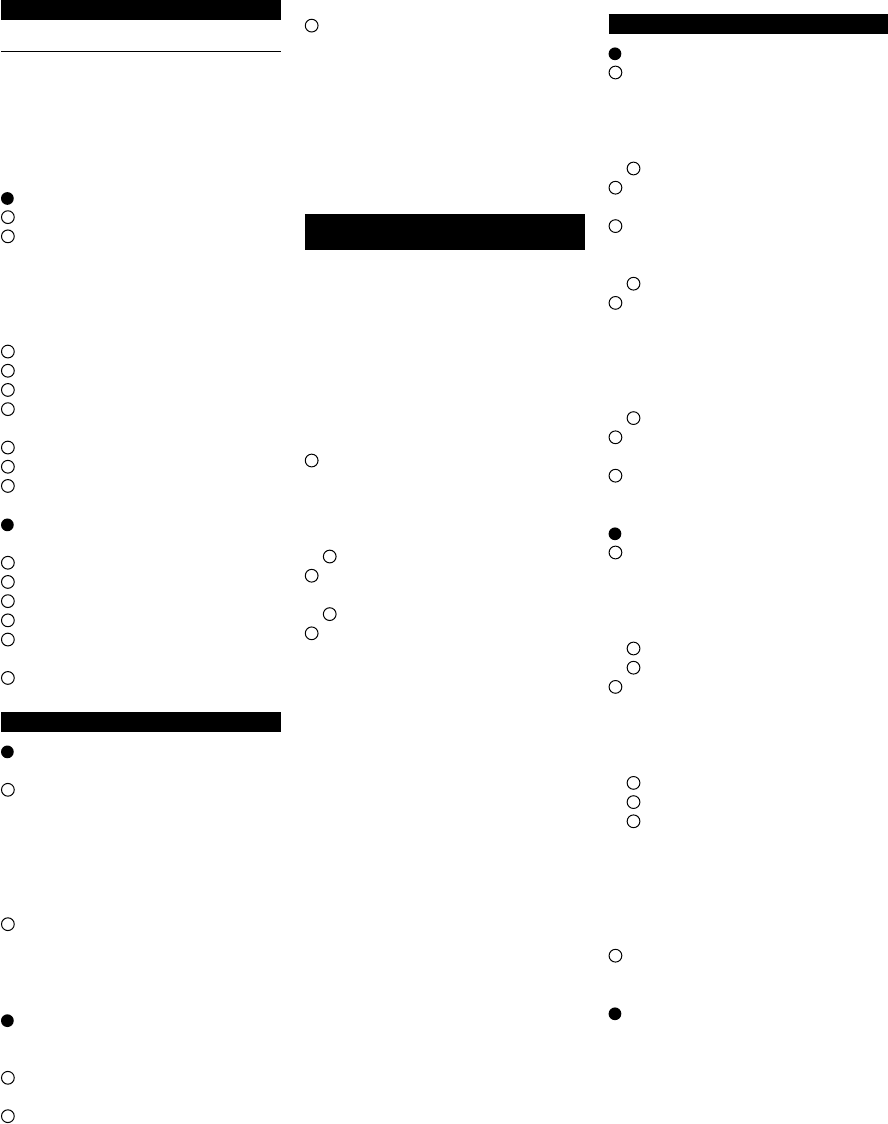
7
Please check the headings I - V with
the diagrams in pages 2, 3, 4, 5.
I. CONTENTS & FEATURES
This kit includes:
A. Hoverash x 1
B. Transmitter x 1
C. Charger x 1
D. Transmitter antenna x 1
The product shown in the gure may
slightly differ from the real ones.
1 Hoverflash
1 Stabilizer
2 Main Rotor
* The rotor has a play structure for
safety, but not completely xed.
When the rotor starts rotating, the
centrifugal force acts on the rotor
allowing it to operate normally.
3 Tail rotor
4 LED lamp (on top)
5 Body
6 Antenna
* Do not cut the antenna rods.
7 7.4V LiPoly battery embedded
8 Skid
9 Charging port / Power switch
(at the bottom)
2 Transmitter
Front
1 Antenna
2 Elevator Stick
3 Switch
4 Rudder trim
5 Throttle stick (left/right)
Rear
6 Battery Door
II. Installation
1 Transmitter Antenna Installation/
Uninstallation
1 Antenna Installation
Turn the antenna clockwise to screw it
in the transmitter body.
The antenna is screw-in type. Securely
screw it in place, otherwise a malfunc-
tion may result from loose antenna
connection.
2 Antenna Uninstallation
Turn the antenna counterclockwise to
remove it. When housing the antenna,
retract it from the root rib for avoiding
bending of the antenna rod.
3 Transmitter Battery Installation
Use eight AA batteries for the
transmitter.
1 Slide open the BATTERY DOOR in
the direction shown in the gure.
2 Insert the BATTERY with correct
polarity (+/-).
Insert AA BATTERIES with the
polarity (+/-) as shown.
3 Replace BATTERY DOOR, following
the removal procedure in reverse.
* When the capacity of the batteries
becomes low, Power LED lamp
changes from steady to blinking.
You need to replace the batteries,
otherwise a malfunction may occur
due to shortened operating
distance.
III. Built-in Battery Charging
Instructions
A rechargeable battery is built into the
helicopter body. Be sure to charge the
battery before you use it. The built-in
LiPoly battery, if not handled properly,
may explode, cause burns or catch re
resulting in a serious accident.
Read “Handling of LiPoly Batteries and
Charger” and handle the battery
properly.
1 Set the power switch of the
helicopter to “OFF”, insert the
charger connector to the charging
port on the helicopter then plug the
charger to a standard wall outlet.
1-1 Charging port.
2 LED lamp on charger will light to
show charger is operating.
2-1 LED lamp
3 When charge is complete, the LED
lamp goes off. Remove the charger
connector from the charging port
on the helicopter then unplug the
charger from the wall outlet.
* Battery charging time varies with
battery level. As a guide, it takes ap-
prox. 1 hour when the battery is near
empty, or 30 minutes if half-empty.
Important:
• To prevent overcharge of batteries,
observe the following instructions:
Do not re-peak a LiPoly battery that
has peaked. The battery, if not used
to y the helicopter, does not require
recharging in the rst one or 2 hours
after a charge.
IV. How to Fly
1 Preparation for Flight
1 Turn on the switch on the heli-
copter body, then the LED lamp
starts blinking. When the LED lamp
changes to steady, the helicopter
becomes ready for ight.
1-1 LED lamp
2 Completely extend the transmitter
antenna.
3 Turn on the switch on the trans-
mitter. Then, the LED lamp starts
blinking.
3-1 LED lamp (blinking)
4 Move the throttle stick to the top
position then to the bottom. The
transmitter gets ready when the
LED lamp changes from blinking
to steady. (This procedure aims to
prevent misoperations.)
4-1 LED lamp (steadily lighting)
5 Stay at least 4 or 5 m (10–15 ft) away
from the helicopter before ying it.
6 Check safety of environment around
you. Now you are ready if no ob-
stacles exist.
2 Transmitter Functions
1 Throttle stick (left) (UP/DOWN)
Moving the throttle stick up allows
the helicopter to ascend, and
moving the stick back makes the
helicopter descend.
1-1 Up
1-2 Down
2 Rudder stick (left) (Left / Right)
Moving the rudder stick left allows
the helicopter to turn left, and
moving the stick right makes the
helicopter turn right.
2-1 Left turn
2-2 Right turn
2-3 Rudder trim
* If the helicopter rotates, adjust the
rudder trim to stop the rotating.
* Move the rudder trim right if the
helicopter rotates rightward, and
move the rudder trim left if the
helicopter rotates leftward.
3 Elevator stick (right)
Moving the elevator stick up allows
the helicopter to y forward.
3 Fly the Helicopter
Flying an R/C helicopter in air requires
a number of operations to be carried
out concurrently. Get the feeling
through training so that your ngers
naturally move. Though learning all at
once is a tough job, you may nd it
easy to learn one by one. You can get
skilled after training though you may
not successfully y the helicopter at
the beginning.
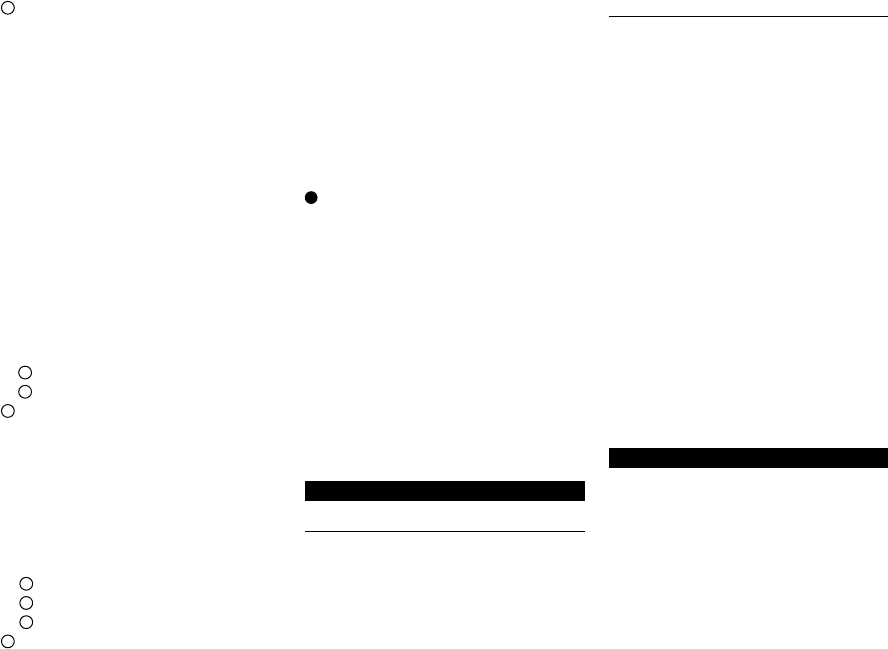
8
1 Slowly move the throttle stick (left)
up to make the helicopter take off.
When the helicopter is slightly
oating, slowly move the stick back
to make it land. Gradually increase
the height as you get accustomed
to the controls, and ne adjust the
stick up and down to get the feeling
of hovering.
* To move the helicopter down, move
the throttle stick back more slowly
than when moving the helicopter up.
* The throttle stick is moved in small
increment of a few millimeters. For
this operation, proper training is
required.
As a feature of a contra-rotating rotor
helicopter, hovering can be achieved
rather easily.
1-1 Up
1-2 Down
2 When the helicopter reaches
hovering, make it rotate at its
position. Move the rudder stick (left)
of the transmitter left or right to
change the direction of the
helicopter.
* If the helicopter rotates by itself,
adjust the rudder trim to stop the
rotating.
2-1 Left turn
2-2 Right turn
2-3 Rudder trim
3 When you get accustomed to the
control of hovering and rotating,
move the forward stick (right) on the
transmitter up to y the helicopter
forward. The helicopter keeps ying
forward while the stick is moved up
and held in position. To stop it, move
the stick back.
* The helicopter cannot smoothly y
forward while it is rotating. Stop the
rotating before ying the helicopter
forward.
If you get the feeling through steps 1 to
3, try to conduct two operations at the
same time. After that, you can freely
y the helicopter by conducting any
combinations of operations.
Important:
When the helicopter crashes,
immediately move the throttle stick
(left) back, otherwise a damage may
result from the idling of the main motor.
4 After use
Turn off the switch on the helicopter
then turn off the transmitter. Be sure
to retract the transmitter antenna.
Important:
• This helicopter is equipped with a
feature for monitoring the battery
level of the builtin battery. The LED
lamp blinks if the battery level
becomes low.
Turn off the switch when the LED lamp
starts blinking. Failure to do so may
adversely affect batteries, resulting in
disabled charge.
V. Flight Location and Condition
Flight Location
First you have to nd a suitable
location for ight.
Check that there are no obstacles
around the ight location before ying
the helicopter.
Fly the helicopter in a safe area away
from roads, other persons and animals,
trees, buildings, overhead power lines
and other obstacles.
Check that there are no such obstacles
in the surroundings before ying the
helicopter.
Flight Condition
Fly the helicopter in warm days, since
it may suffer degradation in ight
performance in a low-temperature
condition. Avoid locations exposed
to wind, otherwise the helicopter may
become uncontrollable. Be sure to y
the helicopter in calm condition.
Do not y the helicopter in bad weather
with heavy thunderstorm, rain, sleet,
snow and the like.
Important:
• Check if a near transmitter produces
interference or signals with the
same frequency.
• Keep supervision to the helicopter
in ight.
• Children are recommended to play
under adult supervision.
* The helicopter is intended for outdoor
use only.
VI. Maintenance
Care and Service
• The life of the helicopter can be
extended by daily care. Wipe the he-
licopter clean if dust or the like builds
up and check if any loose part.
• The helicopter body is made of
polystyrene foam. If damaged, use
scotch tape or suitable adhesives
to repair.
* Never use instant glue which will
make the polystyrene foam dissolve.
• The helicopter may lose balance if
broken and will not y correctly.
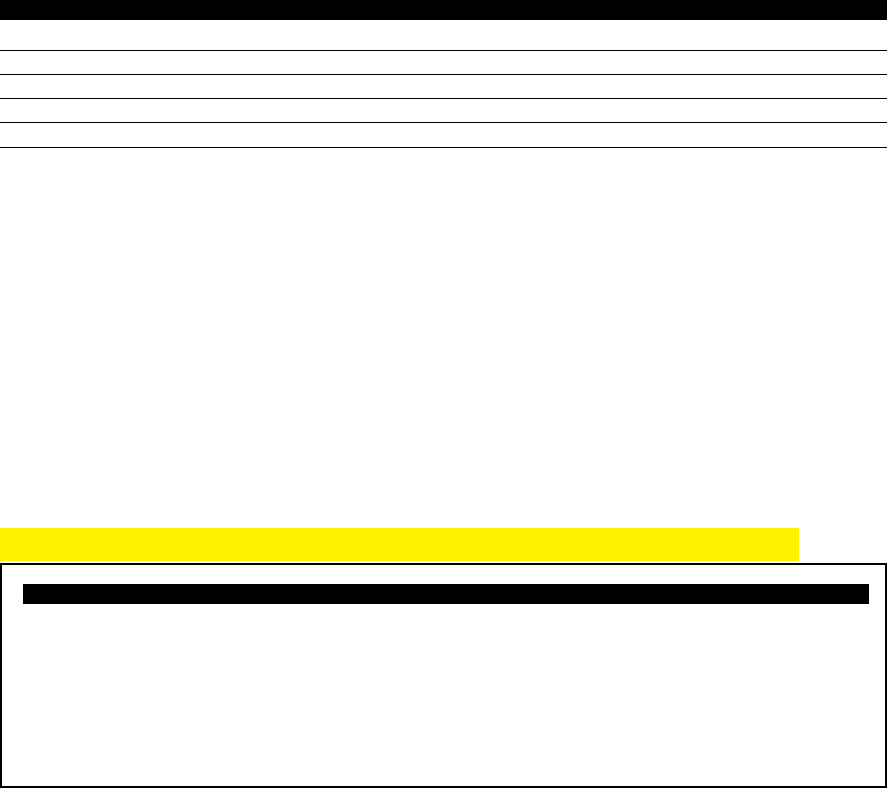
9
TROUBLESHOOTING GUIDE
Checking Points When Helicopter Strangely Operates
• Make sure the power is on.
• Make sure the main battery and the transmitter battery have sufcient charge.
• Check if the main battery and the transmitter battery are inserted with correct polarity.
• Check if the antenna of the transmitter is broken.
• Check if the distance between the transmitter and the helicopter exceeds 20m.
• Check if a near transmitter produces interference or signals with the same frequency. In such a case, move to
another place or try after a while.
Ellen placed this guide from the vehicle manual. Do we need it? Orig. one didn’t have it.
Replacement Parts
SPJ1001 Skid Set: Hoverflash $ 3.99
SPJ1002 Rotor Blad Set: Hoverflash $7.99
SPJ1003 Body Set: Hoverflash $9.99
SPJ1004 Tx Antenna: Hoverflash $5.99
SPJ1005 Tx Battery Cover: Hoverflash $3.99

10
Warranty Period
Exclusive Warranty- Horizon Hobby, Inc., (Horizon)
warranties that the Products purchased (the “Product”)
will be free from defects in materials and workmanship at
the date of purchase by the Purchaser.
Limited Warranty
(a) This warranty is limited to the original Purchaser
(“Purchaser”) and is not transferable. REPAIR OR RE-
PLACEMENT AS PROVIDED UNDER THIS WARRANTY
IS THE EXCLUSIVE REMEDY OF THE PURCHASER.
This warranty covers only those Products purchased
from an authorized Horizon dealer. Third party transac-
tions are not covered by this warranty. Proof of purchase
is required for warranty claims. Further, Horizon reserves
the right to change or modify this warranty without notice
and disclaims all other warranties, express or implied.
(b) Limitations HORIZON MAKES NO WARRANTY OR
REPRESENTATION, EXPRESS OR IMPLIED, ABOUT
NON-INFRINGEMENT, MERCHANTABILITY OR FITNESS
FOR A PARTICULAR PURPOSE OF THE PRODUCT. THE
PURCHASER ACKNOWLEDGES THAT THEY ALONE
HAVE DETERMINED THAT THE PRODUCT WILL
SUITABLY MEET THE REQUIREMENTS OF THE
PURCHASER’S INTENDED USE.
(c) Purchaser Remedy Horizon’s sole obligation
hereunder shall be that Horizon will, at its option,
(i) repair or (ii) replace, any Product determined by
Horizon to be defective. In the event of a defect, these
are the Purchaser’s exclusive remedies. Horizon
reserves the right to inspect any and all equipment
involved in a warranty claim. Repair or replacement
decisions are at the sole discretion of Horizon. This
warranty does not cover cosmetic damage or damage
due to acts of God, accident, misuse, abuse, negligence,
commercial use, or modication of or to any part of the
Product. This warranty does not cover damage due to
improper installation, operation, maintenance, or at-
tempted repair by anyone other than Horizon. Return
of any goods by Purchaser must be approved in writing
by Horizon before shipment.
Damage Limits
HORIZON SHALL NOT BE LIABLE FOR SPECIAL,
INDIRECT OR CONSEQUENTIAL DAMAGES, LOSS OF
PROFITS OR PRODUCTION OR COMMERCIAL LOSS IN
ANY WAY CONNECTED WITH THE PRODUCT, WHETHER
SUCH CLAIM IS BASED IN CONTRACT, WARRANTY,
NEGLIGENCE, OR STRICT LIABILITY. Further, in no event
shall the liability of Horizon exceed the individual price of
the Product on which liability is asserted. As Horizon has
no control over use, setup, nal assembly, modication or
misuse, no liability shall be assumed nor accepted for any
resulting damage or injury. By the act of use, setup or as-
sembly, the user accepts all resulting liability.
If you as the Purchaser or user are not prepared to accept
the liability associated with the use of this Product, you
are advised to return this Product immediately in new and
unused condition to the place of purchase.
Law
These Terms are governed by Illinois law
(without regard to conflict of law principals).
Safety Precautions
This is a sophisticated toy product and must be operated
with caution and common sense and requires some basic
mechanical ability. Failure to operate this Product in a safe
and responsible manner could result in injury or damage to
the Product or other property. This Product is not intended
for use by children without direct adult supervision. The
Product manual contains instructions for safety, operation
and maintenance. It is essential to read and follow all the
instructions and warnings in the manual, prior to assembly,
setup or use, in order to operate correctly and avoid
damage or injury.
Questions, Assistance, and Repairs
Your local hobby store and/or place of purchase cannot
provide warranty support or repair. Once assembly, setup
or use of the Product has been started, you must contact
Horizon directly. This will enable Horizon to better answer
your questions and service you in the event that you may
need any assistance. For questions or assistance, please
direct your email to productsupport@horizonhobby.com, or
call 877.504.0233 toll free to speak to a service technician.
Warranty Inspection and Repairs
To receive warranty service, you must include your original
sales receipt verifying the proof-of-purchase date. Provided
warranty conditions have been met, your Product will be
repaired or replaced free of charge. Repair or replacement
decisions are at the sole discretion of Horizon Hobby.
Pack the Product securely using a shipping carton.
Please note that original boxes may be included, but are
not designed to withstand the rigors of shipping without
additional protection. Ship via a carrier that provides track-
ing and insurance for lost or damaged parcels, as Horizon
is not responsible for merchandise until it arrives and is
accepted at our facility. A Service Repair Request is avail-
able at www.horizonhobby.com on the “Support” tab. If you
do not have internet access, please include a letter with your
complete name, street address, email address and phone
number where you can be reached during business days,
your RMA number, a list of the included items, method of
payment for any non-warranty expenses and a brief sum-
mary of the problem. Your original sales receipt must also
be included for warranty consideration. Be sure your name,
address, and RMA number are clearly written on the outside
of the shipping carton.
All other Products requiring warranty inspection or repair
should be shipped to the following address:
Horizon Product Support
4105 Fieldstone Road
Champaign, Illinois 61822
Please call 877-504-0233 with any questions or
concerns regarding this product or warranty.
WARRANTY
FCC STATEMENT
This device complies with part 15 of the FCC Rules. Operation is subject to the following two conditions:
(1) This device may not cause harmful interference, and
(2) this device must accept any interference received, including interference that may cause undesired operation.
Changes or modifications to this unit not expressly approved by the party responsible for compliance could void the
user’s authority to operate the equipment.
11